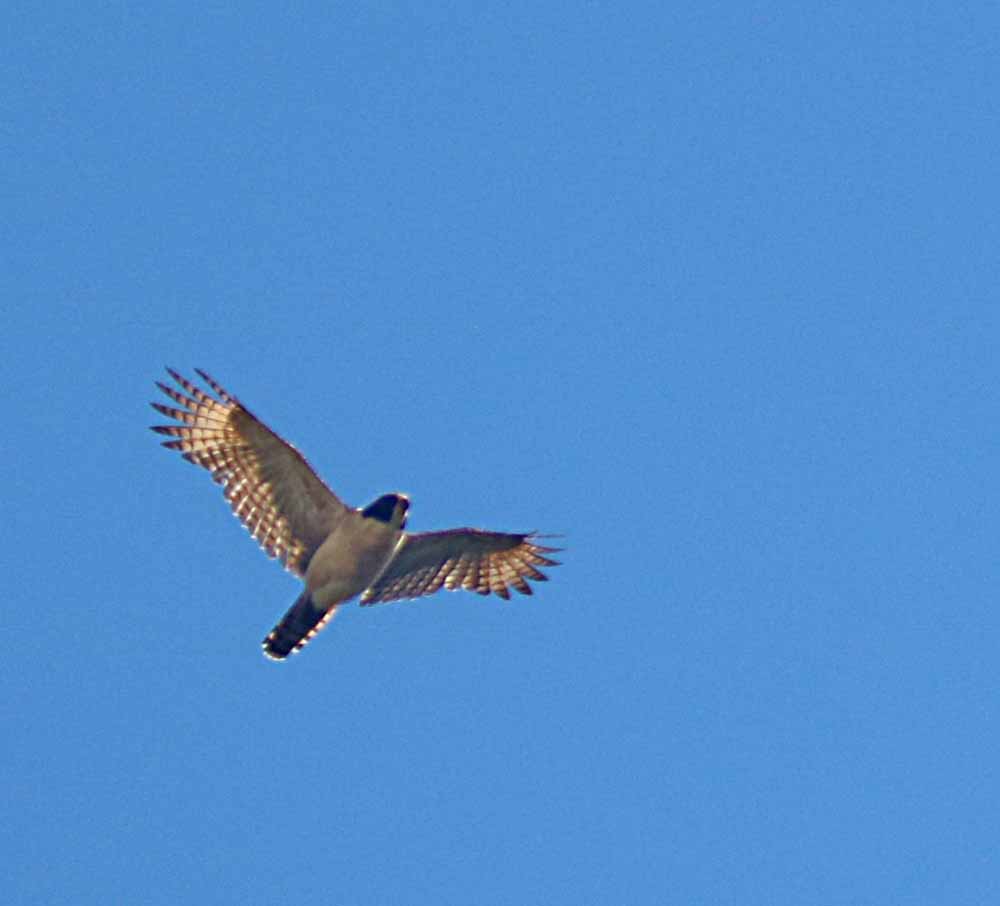As Christmas nears, it seems nice to see doves in the garden! 🙂 And this is my most regular or most seen dove, the White-winged Dove (my gallery link).
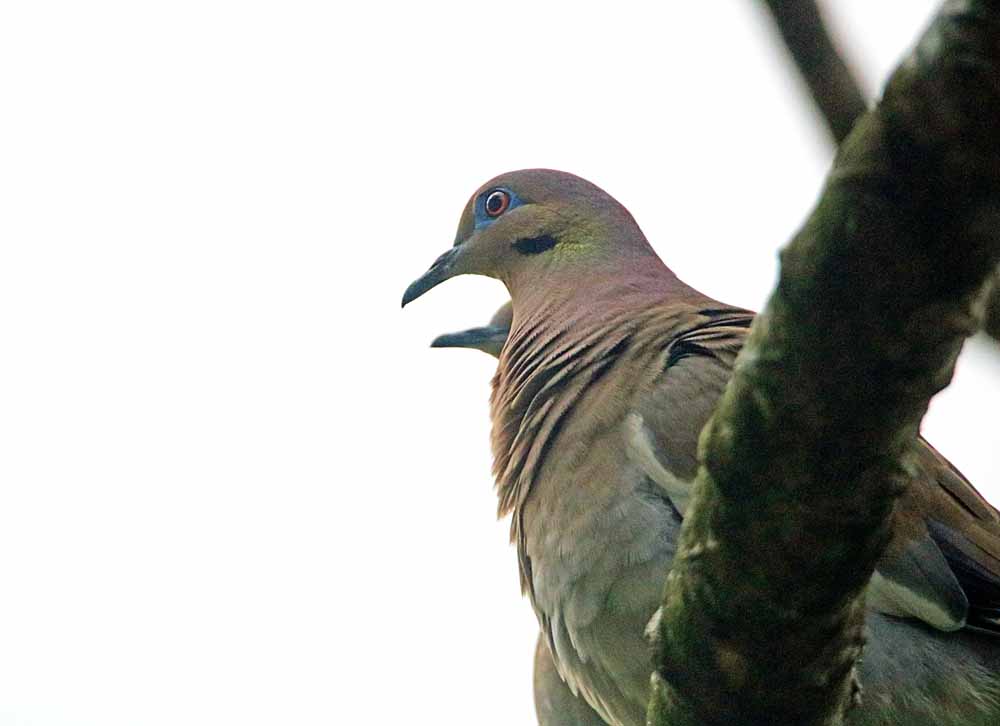
As Christmas nears, it seems nice to see doves in the garden! 🙂 And this is my most regular or most seen dove, the White-winged Dove (my gallery link).

One of our two woodpeckers with the “Woody Woodpecker” hair is the Lineated Woodpecker, Dryocopus lineatus, (my gallery link) “Carpintero Lineado” en español, with the Pale-billed Woodpecker being the other big hairdo woodpecker (his whole head is red!). 🙂 This one sensed that my Cecropia Tree is dying and landed first on the trunk then went straight to a dead limb looking for insects to eat. Because of their “pecking/eating” they tend to stay longer in a tree, making them sometimes easier to photograph than other birds, though the overcast afternoon was poor light that day with a glary white sky. 🙁 Here are two shots from this past Monday. See the gallery for more from all over Costa Rica. He is found only in Central & South America, with North America’s most similar bird being the Pileated Woodpecker (linked to my gallery of one seen on Nashville’s Stones River Greenway).

Is back in Costa Rica from “up north” and no longer called just “Yellow Warbler” as in the past but has a new official name of Northern Yellow Warbler – Setophaga aestiva (linked to my gallery) and what is used by eBird and iNaturalist. Some older books still say just Yellow Warbler and the Princeton Field Guide says American Yellow Warbler. I’m not sure which names are harder to keep up with, Birds or Butterflies! 🙂 They seem to both be changing frequently. This particular bird showed up on December 1 in my Cecropia Tree. Here’s two shots of him/her . . .
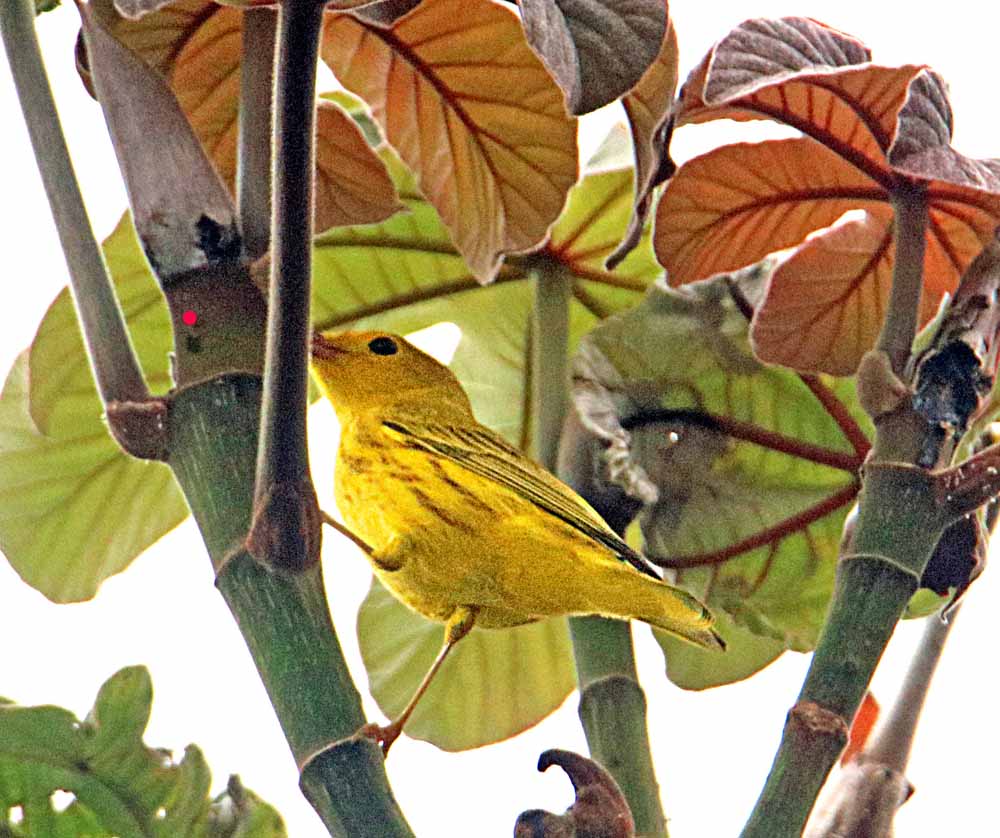
This Rufous-backed Wren (my gallery link) stopped in one of my Nance Trees, not for a berry (wrong time of year) but for an insect snack out of the little Air Plant growing on the tree. 🙂

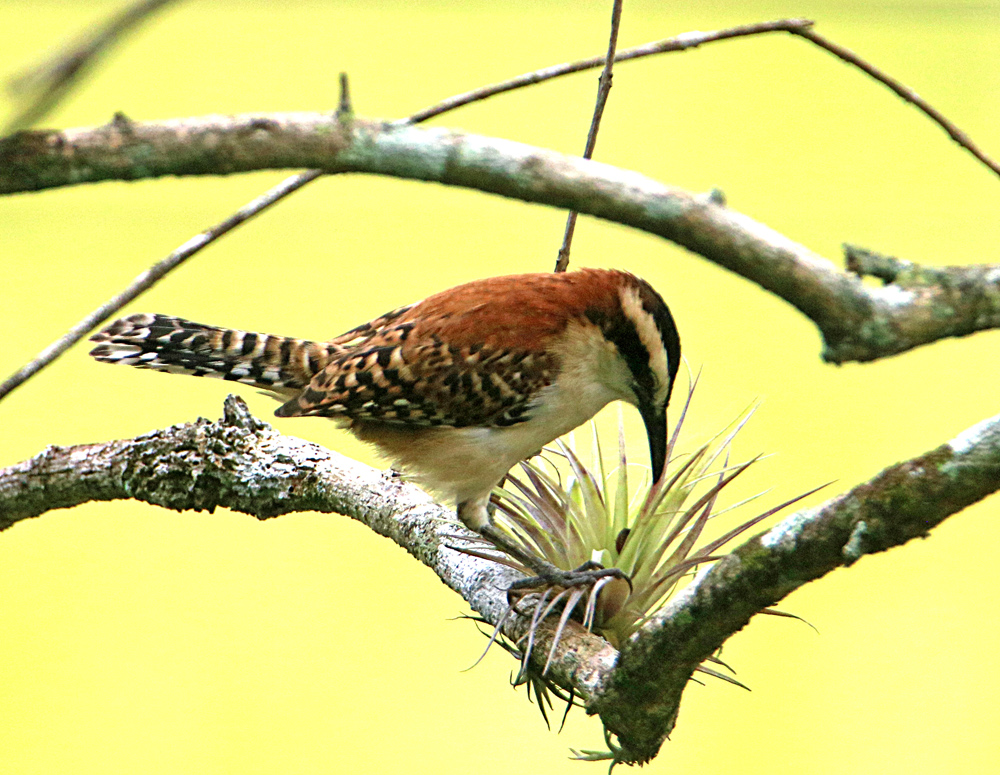
¡Pura Vida!
I’m glad this favored bird visits my garden often enough for me to see at least once a month now! See more photos from multiple locations in my gallery: Lesson’s Motmot, Momotus lessonii. Purely a Central American bird, found only from Panama to Southern Mexico.

Who has always been tan for me instead of gray, but the spots and not the color determines what species it is. 🙂
See my other photos of this species in my Gray Cracker Gallery.
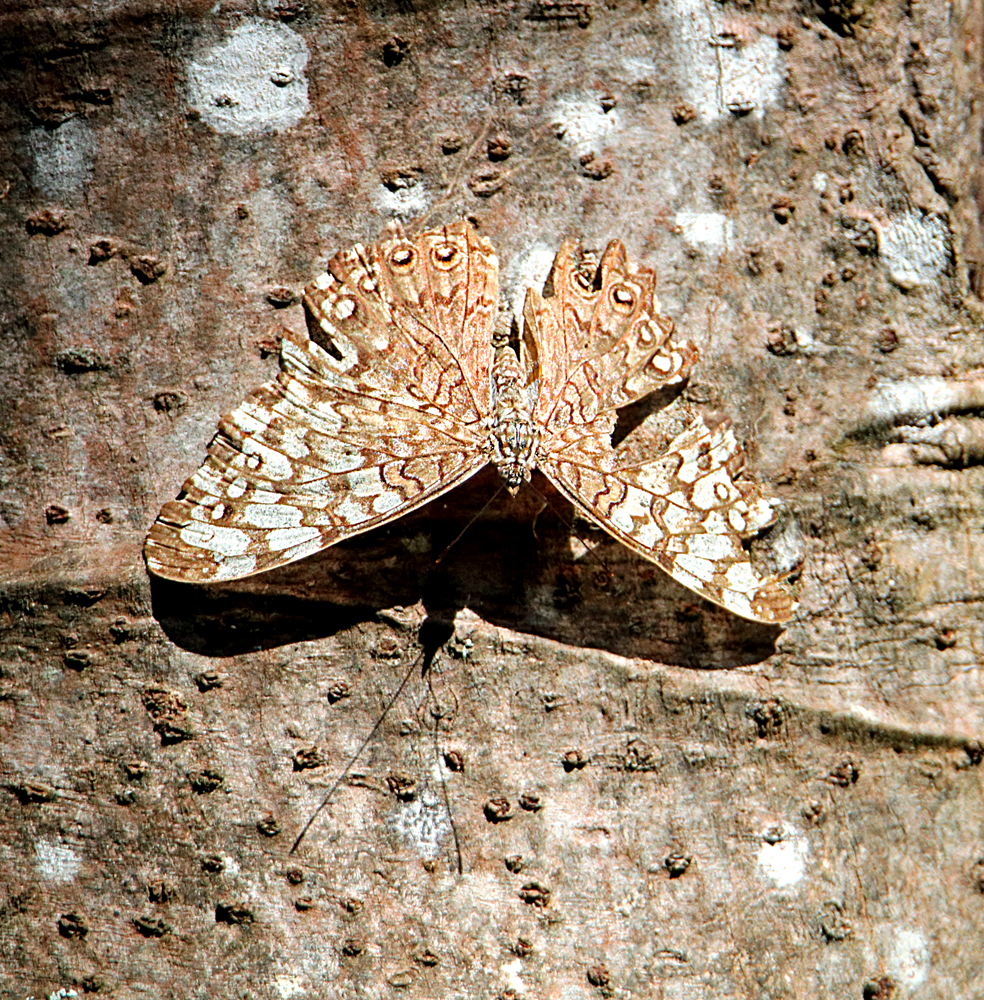
¡Pura Vida!
The adult males are a strong black & blue while the adult females are brown. It is the immature males that have the mottled brown, blue & black look like this. See more photos in my Blue-black Grassquit Gallery. Including my favorite shot of females lined up on a barbwire fence at Carate adjacent Corcovado National Park back in 2009 on my first trip to Costa Rica. 🙂
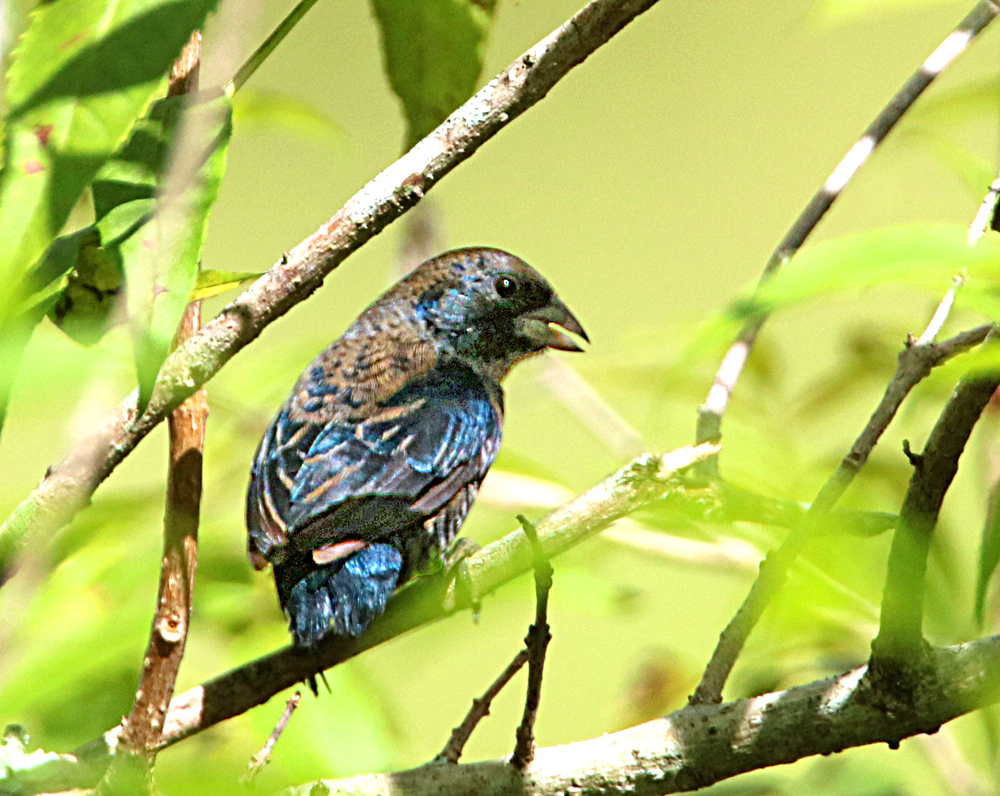
¡Pura Vida!
From the front view, the Great Kiskadee, Social Flycatcher and Boat-billed Flycatcher look almost alike (with differences in overall size & the bills), but one key characteristic of a Great Kiskadee that you can see from behind (or a side view) are the “rufous” (red-brown) feathers while the others have only dull brown feathers. And that is sometimes easier to see than overall size or the size and shape of the bill. Thus I’m sharing this backside photo today to emphasize one of the characteristics of the Great Kiskadee (my gallery link). That yellow spot on his head is true of him and the Social Flycatcher, so another identifier. 🙂
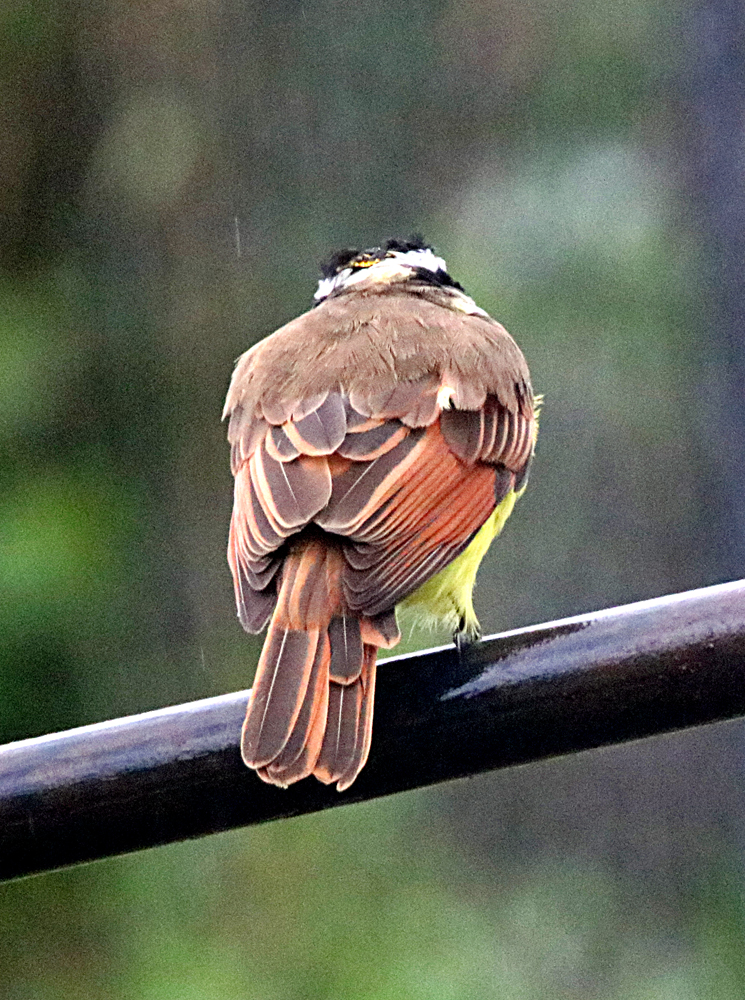
¡Pura Vida!
Yesterday, November 3, 2025, this Keel-billed Toucan (my gallery link) landed in one of my Nance Trees (though not time for the berries). In the past I always had them in my Cecropia Tree, but it is dying and I think they sense that and avoid the tree. My last shot of this Keel-billed Toucan was last November ’24 from my garden but in a tree uphill from me in a neighbor’s tree, two Toucans with a Chachalaca! 🙂 The last of this species in my garden was in January 2023! So I was quite pleased yesterday! And booted the October photo scheduled for tomorrow up to November 15. 🙂 Yes, I have my blog photos scheduled more than 10 days ahead now and will be adding November shots after that. But I did not want to wait until the 15th for these two shots with many more made and in the gallery.

. . . but none up close. For the last couple of days I’ve heard the call or song of the Laughing Falcon, Herpetotheres cachinnans (my gallery link) coming from one of the many big trees on the hill north of me. Yesterday I was trying to find them from a distance when at least 3 of them flew overhead, possibly to K’s, above me, since he got photos of some in his trees. 🙂 I have usually had to go to national parks to see this interesting falcon, but now they are here. They are the same size as many hawks and I think an attractive bird. Another neighbor, Steve, has had one in one of his trees. Here’s two shots of one flying overhead . . .
